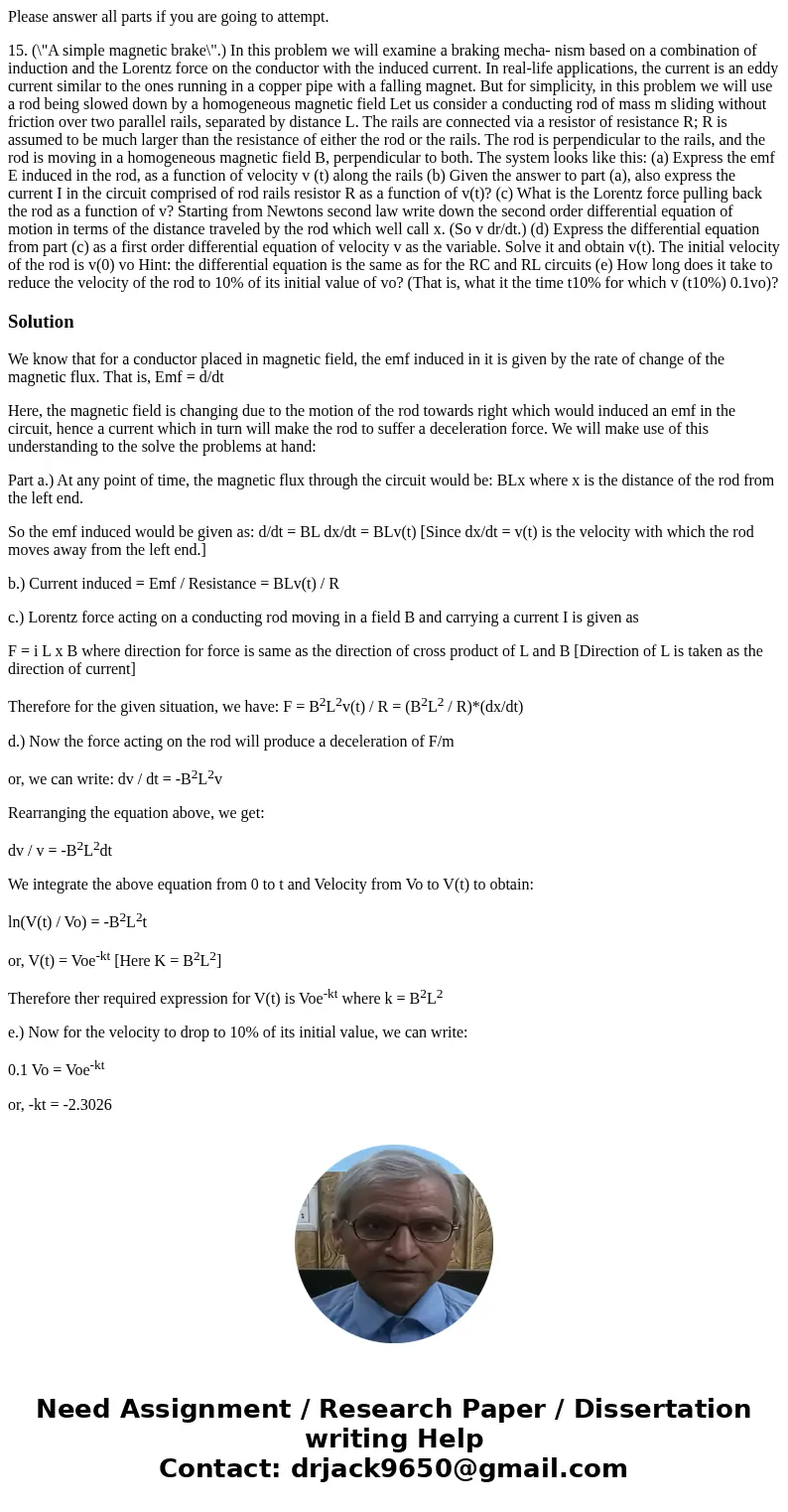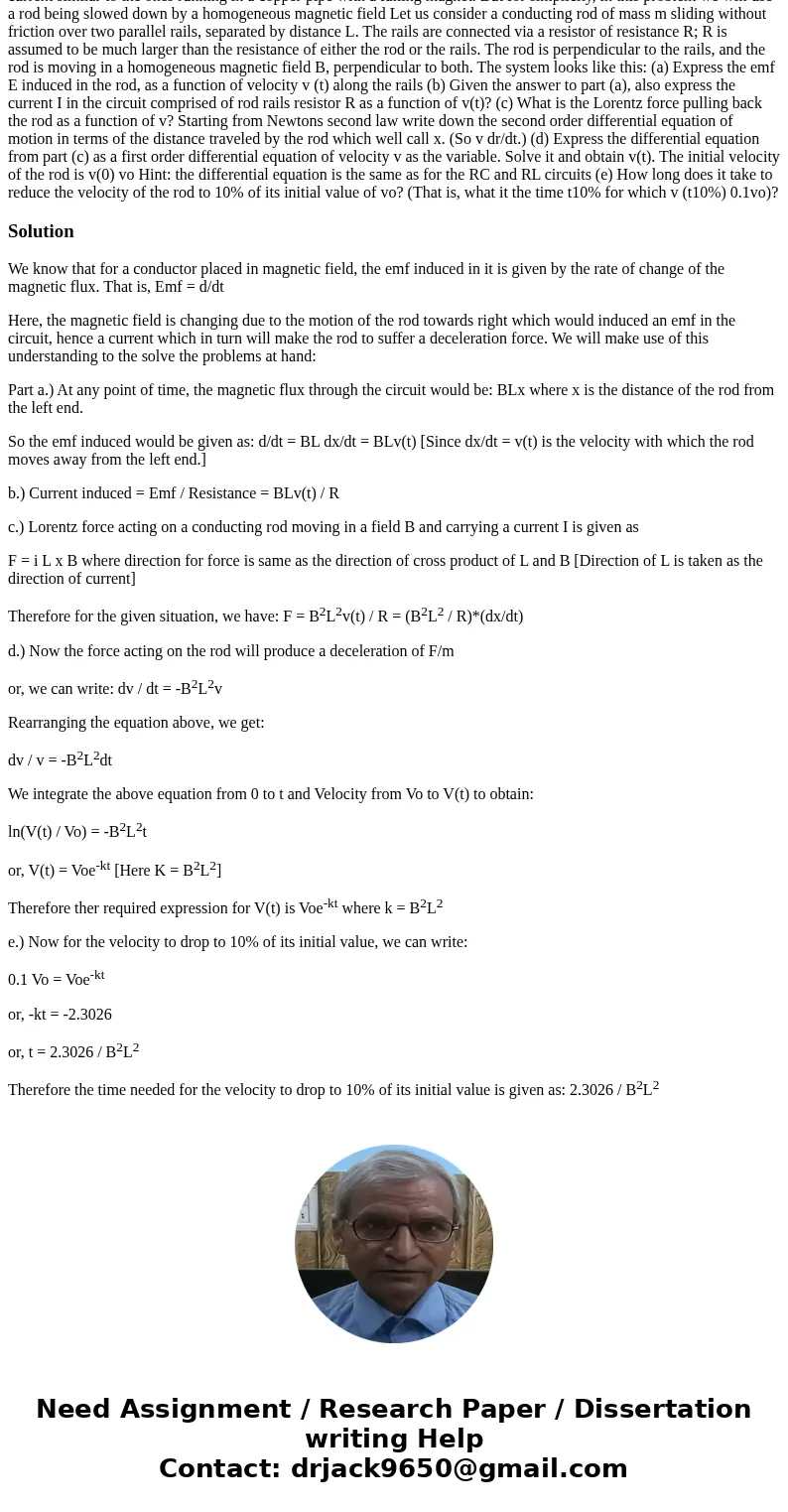Please answer all parts if you are going to attempt 15 A sim
Please answer all parts if you are going to attempt.
15. (\"A simple magnetic brake\".) In this problem we will examine a braking mecha- nism based on a combination of induction and the Lorentz force on the conductor with the induced current. In real-life applications, the current is an eddy current similar to the ones running in a copper pipe with a falling magnet. But for simplicity, in this problem we will use a rod being slowed down by a homogeneous magnetic field Let us consider a conducting rod of mass m sliding without friction over two parallel rails, separated by distance L. The rails are connected via a resistor of resistance R; R is assumed to be much larger than the resistance of either the rod or the rails. The rod is perpendicular to the rails, and the rod is moving in a homogeneous magnetic field B, perpendicular to both. The system looks like this: (a) Express the emf E induced in the rod, as a function of velocity v (t) along the rails (b) Given the answer to part (a), also express the current I in the circuit comprised of rod rails resistor R as a function of v(t)? (c) What is the Lorentz force pulling back the rod as a function of v? Starting from Newtons second law write down the second order differential equation of motion in terms of the distance traveled by the rod which well call x. (So v dr/dt.) (d) Express the differential equation from part (c) as a first order differential equation of velocity v as the variable. Solve it and obtain v(t). The initial velocity of the rod is v(0) vo Hint: the differential equation is the same as for the RC and RL circuits (e) How long does it take to reduce the velocity of the rod to 10% of its initial value of vo? (That is, what it the time t10% for which v (t10%) 0.1vo)?Solution
We know that for a conductor placed in magnetic field, the emf induced in it is given by the rate of change of the magnetic flux. That is, Emf = d/dt
Here, the magnetic field is changing due to the motion of the rod towards right which would induced an emf in the circuit, hence a current which in turn will make the rod to suffer a deceleration force. We will make use of this understanding to the solve the problems at hand:
Part a.) At any point of time, the magnetic flux through the circuit would be: BLx where x is the distance of the rod from the left end.
So the emf induced would be given as: d/dt = BL dx/dt = BLv(t) [Since dx/dt = v(t) is the velocity with which the rod moves away from the left end.]
b.) Current induced = Emf / Resistance = BLv(t) / R
c.) Lorentz force acting on a conducting rod moving in a field B and carrying a current I is given as
F = i L x B where direction for force is same as the direction of cross product of L and B [Direction of L is taken as the direction of current]
Therefore for the given situation, we have: F = B2L2v(t) / R = (B2L2 / R)*(dx/dt)
d.) Now the force acting on the rod will produce a deceleration of F/m
or, we can write: dv / dt = -B2L2v
Rearranging the equation above, we get:
dv / v = -B2L2dt
We integrate the above equation from 0 to t and Velocity from Vo to V(t) to obtain:
ln(V(t) / Vo) = -B2L2t
or, V(t) = Voe-kt [Here K = B2L2]
Therefore ther required expression for V(t) is Voe-kt where k = B2L2
e.) Now for the velocity to drop to 10% of its initial value, we can write:
0.1 Vo = Voe-kt
or, -kt = -2.3026
or, t = 2.3026 / B2L2
Therefore the time needed for the velocity to drop to 10% of its initial value is given as: 2.3026 / B2L2


 Homework Sourse
Homework Sourse